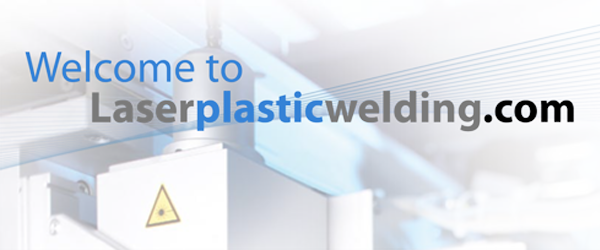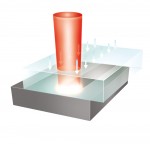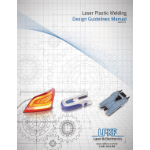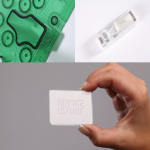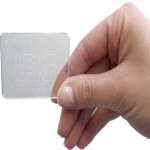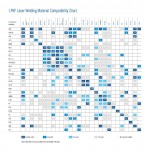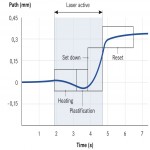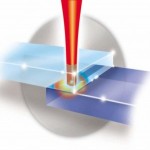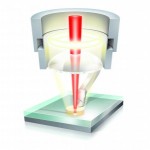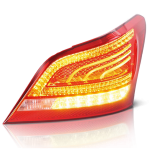First Calibrated and Certified Transmission Measuring Device for Laser Plastic Welding
Material qualification for laser plastic welding with the LPKF TMG 3 transmission measuring device
In laser plastic welding, the light transmission of the plastic is decisive for the quality of the joint between two components. A check of the material properties before welding really pays off in the context of the overall quality assurance process. With the TMG 3 calibrated measuring device from LPKF, the user is on the safe side.
Read the rest of this entry »
Getting Started with Laser Plastic Welding
Register to watch this short but thorough video which will show you how to select and test plastic materials, create test welds, optimize your design, build prototype runs, and plan for mass production. Whether you’re new to laser welding or are already a seasoned veteran, this video will provide you with a clear path to a successful laser plastic welding project.
New Design Guidelines Version 4.0
This very popular document has just been updated to version 4.0, and is now available. The Laser Plastic Welding Design Guidelines is a powerful document for engineers designing applications for laser plastic welding. This improved document covers the main factors affecting a quality weld, material considerations, process types, and much more.
Bonding clear polymers WITHOUT additives!
Thanks to new fiber laser technology it is now possible to weld clear and translucent polymers without requiring any specialized additives. Traditional through-transmission laser welding requires additives, whether pigments or specialized additives designed specifically to absorb the near-IR radiation. This was limiting, however, as it made bonding completely clear polymers expensive and the color was never truly. Read the rest of this entry »
Webinar: “Transparent Laser Plastic Welding”
“Transparent Laser Plastic Welding – Bonding of clear polymers without additives”
A breakthrough in laser plastic welding technology has opened doors for bonding of transparent polymers. Precision, flexibility and cleanliness already set laser plastic welding apart from other polymer bonding methods, but now the ability to bond clear polymers without special absorbers has expanded the list of potential applications. Find out how this technology will play a big part in the diffusion of laser plastic welding, especially in the mammoth medical device industry.
Material Compatibility Chart
This chart displays the most common, weldable thermoplastics. Each sample of this study was done with the plastic materials in their natural state. Please take note of the color system which indicates weld quality.
For more information on plastics a compatibility please see the Laser Plastic Welding Design Guidelines document or the Design Guidelines webinar.
Quality Assurance for Laser Polymer Welding Processe
Quasi-simultaneous Laser Welding
Transmission laser welding of polymers is a well-established industrial joining method, its reliability makes it particularly suitable for applications where very high weld seam quality is specified. A number of quality assurance methods are available when using this technology to safeguard the specifications demand for quality. These quality assurance methods are suitable for implementing a zero-error strategy, under very economically attractive conditions. This three-part series of articles discusses the different approaches.
What Is Transmission Welding?
Transmission welding or laser transmission welding also goes by a few other names, including: laser plastic welding, through-transmission welding (TTLW) and laser polymer welding. The names may be different but the concept is all the same.
Although, “laser plastic welding” is the term most often used to describe this technology, “transmission welding” is a much more descriptive term and more accurately portrays the process. This is because the basic principle of this joining method is passing, or transmitting, laser radiation through one piece of plastic to create a weld. Unlike standard welding where the energy is applied at the surface of the materials. Transmission welding aims to apply the energy in between two plastic pieces at their interface.
Automotive Electronics Components – Vehicle Schematic
An interactive schematic showing laser plastic welded sensor housings and other electronics of a car.
Electronics make up roughly 1/3 of the cost of a car. Securely welded plastic housings ensure those electronics are well protected.
Hybrid Laser Welding Process
In the process of laser plastic welding an infrared laser beam is passed through an upper laser transmissive layer to a lower laser absorbing layer. The energy absorbed at the weld interface is conducted from the lower layer to the upper layer through conduction as the parts are clamped tightly together.
Hybrid laser welding is the same concept, however, in addition to the laser radiation a high-powered halogen lamp assists the laser. The polychromatic radiation from the halogen lamp helps pre-heat and soften both the upper and lower layer. This makes for faster welding, less stress on the part and stronger welds.
